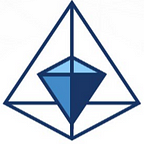3D models for video games
The VR video game market is now the most promising in the AR/VR industry, with revenue expected to reach $22.9 bn by 2020.
Virtual reality technology can enable gamers to immerse themselves in an imaginary setting where the gamer’s physical presence is simulated to be a part of the 3D environment. With VR equipment and accessories, the user can view, move around, and even interact with the objects within the game. Several startups are developing prototypes for using VR technology in video games, which is expected to impact growth favorably in the years to come.
Advances in VR hardware and software are making VR gaming technology both powerful and desirable. Gaming companies, now confident in the sustainability of VR gaming, have started taking its development seriously. According to the Goldman Sachs report, the gaming industry will gain a third of the AR/VR market by 2025. There are about 230 million consoles (including Xbox, PlayStation and Nintendo Wii) in the world and 150 million users playing PC games. However, enthusiastic gamers are all for more palpable experience — is there a better way to enjoy a favorite game than dive in and look around, tuning all senses to upcoming fantastic adventures? The experts believe that VR tools will be most demanded by those gamers who spend over 15 hours a week playing — which accounts for 30% of game console owners. Even roughly considered, video games seem to be one of the most rapidly developing industries, and demand for high-quality versatile 3D models is growing day by day.
An increasing number of developers are abandoning outdated platforms in favor of VR. Thanks to rising interest in VR game development, this industry is now the highest adopter of VR content. This is of much greater importance to the developers than one might think. Since VR game development has become a driver of VR content development, we can expect to see even greater advances on the creative side of VR. As gaming companies release more and more VR games, content investments will shift from 2D content to near-photorealistic models. There is a growing list of companies involved in VR content creation, and this provides new opportunities for VR game developers who can develop highly-detailed graphics.
The Cappasity ecosystem offers a comprehensive solution to the mutual benefit of game developers and content creators. To stun and deeply engage players, a developer needs outstanding 3D content, and the Ecosystem Marketplace offers an extensive selection of such content. Before actually buying a model, game developers can test it in the sandbox area via the link to be sure that it is just what they need. During the test period, it is also possible to download the purchased model in the relevant format and use it in their development framework. The smart contract protocol allocates the revenue among the 3D content makers and transfers the funds to them. The developers obtain the files with the 3D models, and can use them for the game.
AR/VR developers and active community contributors are to be supported through dedicated AR Funds. Cappasity will invite the AR/VR community as well as the cryptocommunity to contribute to AR/VR Ecosystem development by taking part in the ARToken sale. The community contributions will help AR/VR Ecosystem development and accelerating Cappasity’s innovation pipeline. In response, a fair share of contributions will be reserved in form of endowment funds to support AR/VR/3D innovators and active Ecosystem contributors. To favor the AR/VR/3D community, two endowment entities are established: the AR/VR Innovation Fund and Reward Fund. Upon a successful token sale 20% of raised funds will be dedicated to the former and 10% will be allocated to the latter.
This well-developed and unhindered process can speed up games’ releases multifold and, additionally, offers a fair and safe method of trading 3D content.
